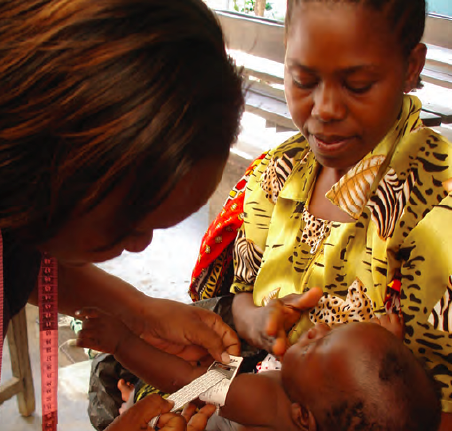Incorporating Nutrition into Vulnerability Assessments: A practical approach from Kenya
 Victoria Mwenda
Victoria Mwenda
Victoria has a Bachelors degree in Nutrition and Dietetics from Kenyatta University and a Masters degree in Public Health from Liverpool University in the UK. She currently works as the Nutrition Advisor for the Kenyan Red Cross.
Background
In recent years, resilience has become a common concept amongst humanitarian and development actors with various operational definitions. In 2014, the UN Food and Agriculture Organization (FAO) produced a strategic paper, Nutrition and Resilience, which sought to define the link between nutrition and resilience. In this paper, nutrition was proposed as “both an input to and an outcome of strengthened resilience” with a reduction in malnutrition considered critical in the strengthening of household resilience largely because well-nourished individuals are healthier, can work harder and have greater physical reserves. Inferred within this is that households that are nutrition secure are better able to withstand external shocks and conversely, households that are most affected by shocks and threats face the greatest risk of malnutrition. Therefore, strengthening resilience is put forth as essential to efforts aimed at reducing malnutrition.
Vulnerability and capacity assessment (VCA) is a process of participatory investigation designed and employed by the Red Cross/Crescent Movement to assess major risks affecting communities and determine people’s vulnerability to those risks and their capacity to cope and recover from disaster. The VCA methods of inquiry include key informant interviews, focus group discussions (FGD); transect walks (walks through communities) and observations. In various highly vulnerable Arid counties in Kenya, the Kenya Red Cross Society (KRCS) has applied the VCA approach to enable communities to better understand predicted risks and hazards in their environment, increase awareness of their capacities to cope with risks and hazards, and implement disaster preparedness and response interventions.
A review of 15 VCA assessment reports in four Arid counties conducted from 2011 to 2013 highlights that in 14 out of 15 VCAs, malnutrition was identified by communities as a vulnerability or risk arising from hazards such as drought and conflict. While malnutrition was identified as a risk, communities did not uniformly explore during the VCA why this is the case or identify capacities for addressing the risk. Just 3 of the 14 VCAs (21%) described how malnutrition could be resolved by the communities and other actors. In these specific cases, the communities identified appropriate care and feeding practices as mechanisms that they could employ to address malnutrition, in addition to an improvement in access to health care services. The same communities identified the link between improved nutritional status and access to food during lean seasons.
Integrating nutrition into the VCA
In 2013, the KRCS nutrition department incorporated simple tools to enable teams to better assess maternal, infant and young child nutrition to enhance the VCA process and assist communities to understand malnutrition in relation to the major hazard they had identified. The inclusion of nutrition assessment did not elicit extra financial cost or additional time. During mobilization, women were asked to come with their children during the FGDs and the children were assessed using mid-upper arm circumference (MUAC). Results were explained and those with children with a MUAC of < 12.5 cm were referred to the nearest health facility. All the women received advice on appropriate feeding practices for their children (specific to age) and health services to prevent malnutrition. Messages around breastfeeding, complementary feeding and other supportive actions like hand washing were the main focus and part of a package of information given to mothers/caregivers. The teams also asked standard questions on dietary diversity (from the Kenya Nutrition Sector rapid assessment tools 2013) to gather more information on the kinds of foods that were accessible and consumed. Clear gaps in knowledge on optimal nutrition practices and how they increase vulnerability to malnutrition were documented. The KRCS team was then able to incorporate nutrition education, community based nutrition assessments with referrals to the government facilities aimed at increasing awareness and access to nutrition services. Community health volunteers and community health workers were all trained using the standard government community strategy modules (2013) to build their capacity for service delivery. Key areas covered in the training include screening, growth monitoring, nutrition and health education, referral to other facilities and reporting.
Conclusion
VCAs are a useful tool for minimizing disaster risk and they hold the potential to be expanded to investigate risks and vulnerabilities related to nutrition. Based on this experience, the KRSC aims to further mainstream nutrition into the VCA enquiry and will support VCA team members to understand how nutrition links to resilience. KRCS has simultaneously started the process of aligning its approaches including its monitoring and evaluation framework across thematic areas (Health, WASH, Nutrition, Food security, Climate change) to have a more focused output that recognises all elements related to individual, household and community resilience. To gather support for, and understanding of the concept of resilience for nutrition, KRCS will continue to work with various government sectors including Health, Agriculture, Water, Education, Devolution (which includes gender and social protection), Finance and Planning to increase nutrition specific and sensitive actions and advocate for investment in nutrition to reduce vulnerability and risk to drought and conflict.

